The International Symposium on High Performance Liquid Phase Separations and Related Techniques (HPLC) returns to Germany! After Baden-Baden in 1983, Hamburg in 1993, and Dresden in 2009, HPLC will be held for the fourth time at the Congress Center in Düsseldorf in 2023 (1) – its 51st incarnation!
HPLC has come a long way since the Symposium was founded in 1973 by Willy Simon, Jack J. Kirkland, Georges Guiochon, and Josef K. Huber – so far, in fact, that today’s generation of (U)HPLC users may have forgotten about the pioneering scientists who helped build the foundations for today’s LC innovation.
Over the years, many have broken new ground on the Symposium stage – from the fundamentals of liquid phase separation, HPLC column preparation, and stationary phase synthesis and characterization, to the latest equipment advances in high-pressure solvent delivery, sample injection, and coupling with mass spectrometry. It all happened at HPLC.
With that in mind – and to celebrate HPLC’s return to Deutschland – we present a selection of German scientists and entrepreneurs who participated in the evolution and maturation of HPLC.
Welcome to HPLC’s Gallery of Honor: German Edition.
István Halász is an internationally renowned scientist in the theory and practice of chromatographic separation techniques.
Halász was born in Hungary and served in the Hungarian army during WWII. He moved to Germany in 1956 and started working at the Institute of Physical Chemistry at the University of Frankfurt/Main. Halász became a lecturer in 1961 and was promoted to Professor in 1964. Besides his academic work at Frankfurt University, he was the head of the “Gas Laboratory” at Scholven-Chemie AG at Gelsenkirchen (1957-1960).
Halász’s work was focused on the fundamentals of optimizing chromatographic column performance. Initially, his improvements to capillary columns in gas chromatography led to the development of PLOT-Columns.
As early as 1967, Halász switched to liquid mobile phases. His practical and theoretical work in HPLC aimed to improve column efficiency via packing technologies, reduction of peak broadening in connecting tubes, the influence of column dimensions, particle diameter, and more. With his “pragmatical theory” of chromatography, he developed simple rules to evaluate the “limits” of HPLC.
Reproducibility, accuracy, and practical applicability of chromatography were at the center of his work – as well as transferring these values to his more than 50 students.
Halász died in 1988. In 1990, by his last will, the István-Halász-Foundation was established at the University of the Saarland, Germany, to support young analytical chemists.
The Hungarian Society of Separation Science (HSSS) has awarded the Halász-Medal to renowned scientists in separation science since 1997.
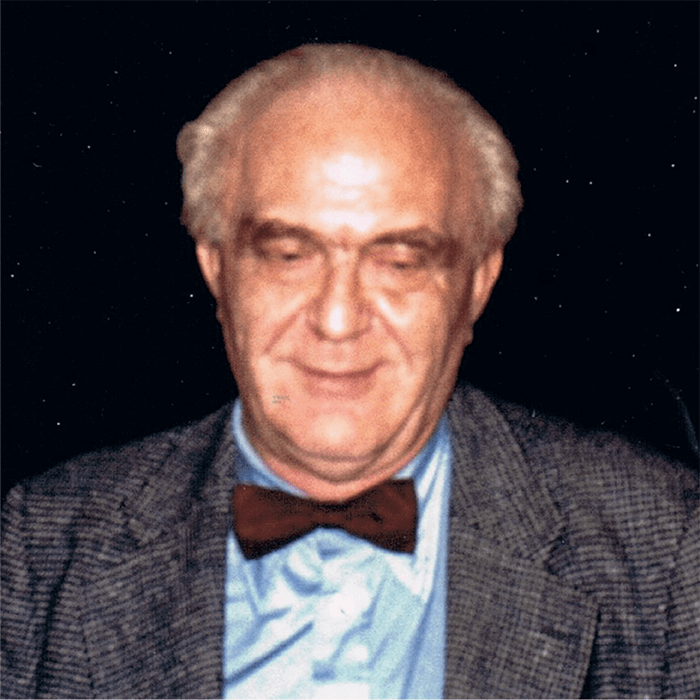
From the beginning of his career, Klaus K. Unger aimed to increase the separation power of chromatographic systems. For example, he optimized the A-term of the van Deemter equation by using smaller and smaller particles (down to submicron particles), monodisperse instead of polydisperse particles, and spherical instead of irregularly shaped particles. He also worked on reducing the C-term in the van Deemter equation by using smaller particles (with shorter diffusion paths) down to the extreme of non-porous particles. The construction of uniform pores in an adsorbent, thus decreasing inhomogeneities in the pore structure.
In 1973, Klaus Unger spent six months as a visiting scientist in Barry Karger’s laboratory at the Northeastern University in Boston. He, together with Istvan Halasz, Bengt-Arne Persson, Johan Kraak, Heinz Engelhardt, Peter Schoenmakers, and Wolfgang Lindner, formed an outstanding group of postdoctoral fellows who in later years became a network of pioneers in the field of HPLC. In Boston, Klaus Unger packed 1–3 µm silica into HPLC columns for the first time in his search for highly efficient chromatographic separation systems.
Unger’s first publications in the 1960s demonstrated the need for highly efficient chromatographic systems. Unger packed glass columns of 1 cm diameter and 195 (!) cm length with different silica gel materials varying in their pore diameter from 20–25 Å up to 500–700 Å.
The Unger group worked on the synthesis of porous materials, mainly silica, that are used as adsorbents and catalysts. In addition, he worked on the functionalization and characterization of the surfaces of porous materials and especially on their application in chromatography.
In a landmark monograph published in 1979, Unger condensed all his knowledge on the structure of porous silica, the surface chemistry, the measurement of porosity, specific surface area, particle size, and size distribution, packing methods, surface modification and applications to ion exchange, and size exclusion chromatography. This book has become the bible of liquid chromatography on silica.
Unger also worked with E. Merck, in Darmstadt. The first two commercial products, Perisorb A and B, were based on the process developed by Unger in his laboratory to produce porous silica from tetraethoxysilane via poly(ethoxysiloxane). These were followed by the well-known LiChrosorb and LiChrosphere.
After his (first!) retirement, Unger led a research group at Merck KGaA in bioseparation science in Darmstadt for another eight years until his final retirement in 2009.
Klaus Unger has been the author of over 400 publications, an author/co-author on 15 monographs, and co-editor of 17 Symposium Proceedings, the inventor of 55 patents on chromatographic materials and inorganic catalysts, and the supervisor of 125 PhD students.
The work of Klaus Unger has shaped the world of HPLC from the 1970 until today’s modern UHPLC. He was truly a German giant and pioneer of chromatography.
Klaus died in 2020 at the age of 84 years.
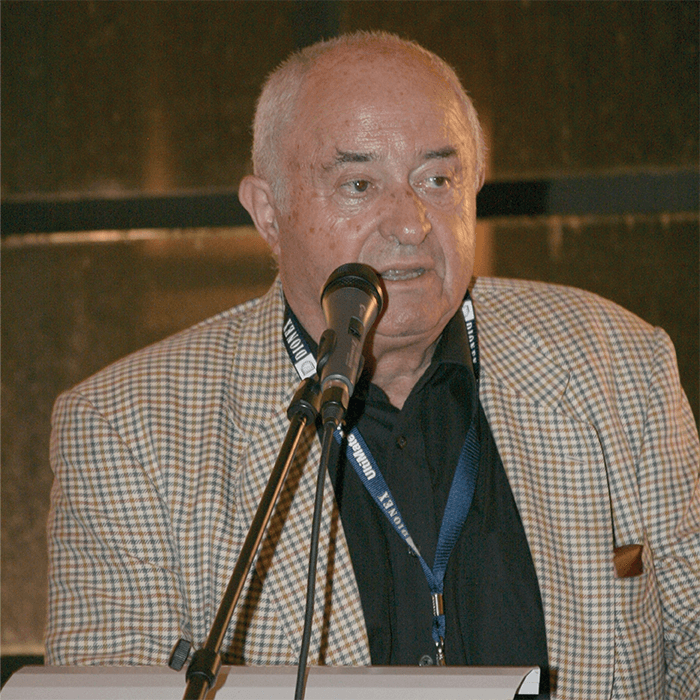
As a scientist, Klaus-Peter Hupe brought HPLC from its infancy to maturity; as an entrepreneur, he shaped and established the industry. Hupe is considered the seed of Agilent’s high-tech campus in Germany.
Hupe was born in 1931 in northern Germany. He studied mechanical and process engineering at the Technical Universities of Braunschweig and Karlsruhe, and received his PhD from the Institute of Thermodynamics at the Technical University of Karlsruhe in 1959 on “Heat and Mass Transport in Trickle Sheath Flow.”
While working at the Technical University of Karlsruhe (which he did until 1962), Hupe was approached by Ernst Bayer, who asked him to build a preparative gas chromatograph (2). This instrument was received with great enthusiasm by users and created the demand for more systems.
This was the basis for the foundation of the company “Dr. Hupe Apparaten Bau” in Karlsruhe, which was dedicated to the design, manufacture, and marketing of preparative gas chromatography systems. In this instrument, a column packed with polyethylene glycol particles of 40 mm i.d. and 2 m length was used to collect fractions in mL volume fully automatically.
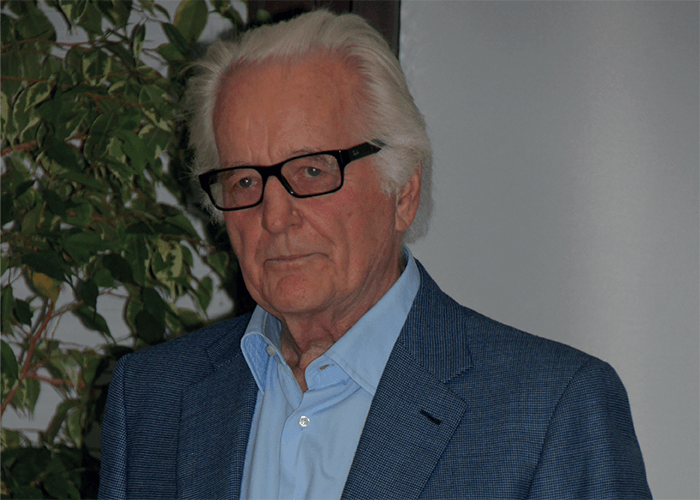
With the emergence of the new field of liquid chromatography in the late 1960s, Hupe partnered with Ulrich Busch and founded the “Hupe and Busch” company, which entered the LC field in 1972 with the UFC 1000 Universal Liquid Chromatography System. This was the first fully integrated HPLC system on the market and the technology leader. With this system, Hupe & Busch company was acquired by Hewlett-Packard in 1973, and the system was marketed under the HP brand name 1010.
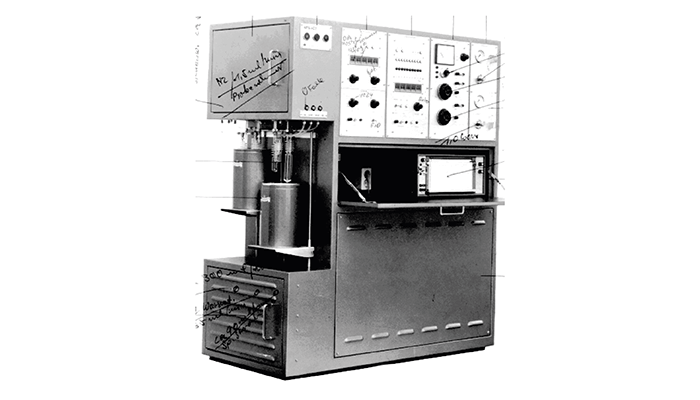
Hupe became general manager of the HP division and oversaw the development of the next generation of integrated HPLC systems – the 1080 series. With the company’s relocation from Karlsruhe to the new site in Waldbronn, Hupe stepped down as General Manager to concentrate on separation science until his retirement in 1995. During that time, he continued to guide Hewlett-Packard’s HPLC instrumentation as a scientific advisor to the Waldbronn division, remaining very influential in product development, culminating in the prestigious HP 1090 series, which introduced narrow-bore HPLC to the market and made HP the technology leader in liquid chromatography systems into the late 1990s.
Hupe has been a member of the scientific committee of the HPLC Symposium for many years and was the chairman of HPLC 1983 in Baden-Baden.
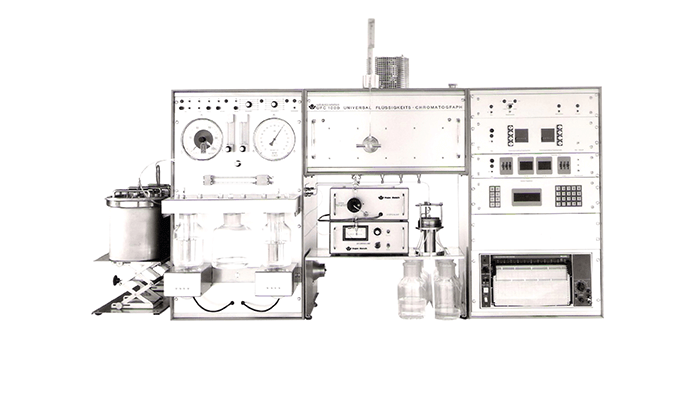
Heinz Engelhardt’s main field of work has always been HPLC. His focus has ranged from pragmatic approaches to complex theoretical descriptions of LC, through stationary phase characterization, to developing stationary phase binding technologies for HPLC. His systematic studies of gradient elution in the 1970s and 1980s made the theoretical models of Giddings, Snyder, and others generally digestible. They led to practical user concepts for method development and scaling, laid down in a widely acclaimed monograph.
Another area in which Engelhardt made a significant contribution was the characterization of HPLC stationary phases with simple test compounds representative of hydrophobic, polar, or ionic molecular interactions. This work resulted in the well-known Engelhardt Test as one of the most prominent HPLC stationary phase classification methods (3).
Other research areas included synthesizing stationary phases for new selectivity in reversed-phase chromatography, ion-exchange chromatography, and enantiomeric separations.
After HPLC, Engelhardt’s second main area of interest was capillary electrophoresis. In the 1990s, he investigated various surface modification technologies to actively modify and control the electroosmotic properties inside fused silica capillaries and suppress detrimental analyte-wall interactions. His involvement in CE applications ranged from analyzing inorganic ions with indirect detection to enantiomeric separations and the characterization of polyelectrolytes.
While at Saarland University, he supervised 97 doctoral students who continue to pass on his knowledge and work ethic in industrial and academic research facilities worldwide. More than 250 research publications to date testify to his extensive and multifaceted scientific creativity in liquid phase separation science.
In 1990, after German reunification, he and Werner Engewald founded the first series of meetings for young German separation scientists, bringing together the generations of a divided country to learn from each other and bridge the gaps left by 40 years of separation.
In addition to publishing in peer-reviewed journals, Heinz Engelhardt has always aimed to communicate scientific knowledge to the everyday user of liquid phase separations, focusing on making it accessible to the German-speaking community. He published the first convenient guide to HPLC in the German language. Since its first publication in 1975, the book “Hochdruck-Flüssigkeits-Chromatographie” has gone through several editions and translations into several languages, including English, Russian, and Chinese. Among his many activities as a reviewer and consultant, he was editor of the journal Chromatographia for 13 years and a member of the Permanent Scientific Committee of the HPLC Symposium Series.
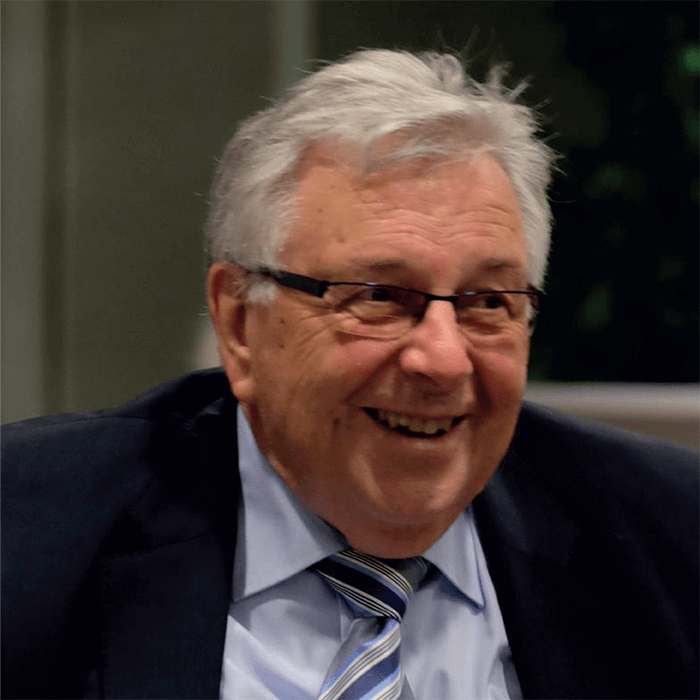
As a freshly graduated doctor of engineering working as a scientific assistant at the Technical University of Berlin in the early 1960s, Herbert Knauer spent his afternoons and weekends in the kitchen at home - not as a hobby cook, but instead working on new analytical solutions. Here, Knauer developed a precision instrument for measuring the smallest temperature changes of 1/1000 degree Celsius, which was sensational at the time.
With the university’s permission, Herbert Knauer and his wife Roswitha founded the company “Wissenschaftliche Gerätebau Dr. Ing. Herbert Knauer Gesellschaft mbH” in Berlin-Schmargendorf on October 1, 1962. After further development, KNAUER made a name for itself as the first company in Europe to manufacture osmometers for chemistry and medicine.
Inspired by a visit to a trade show in Bratislava in the early 1970s, Knauer had the idea of entering the HPLC instrumentation market. As a chemist, he recognized the great potential of this analytical technology, which was still in its infancy. The only competitor at the time was Waters, and in 1974 Herbert Knauer and his company became the first German manufacturer of HPLC systems.
The first generations of HPLC systems were bulky and difficult to use. Their components, such as pumps and detectors, were all in the same housing, making repairs or replacements difficult. Knauer saw this as a problem that needed to be solved. After discussions with chemists and researchers at various institutes in Berlin, he developed the solution: the first modular HPLC system. The stackable components were easily interchangeable, allowing different pump and detector combinations to be easily configured and repairs to be easily performed. This design would soon become the standard for HPLC systems around the world.
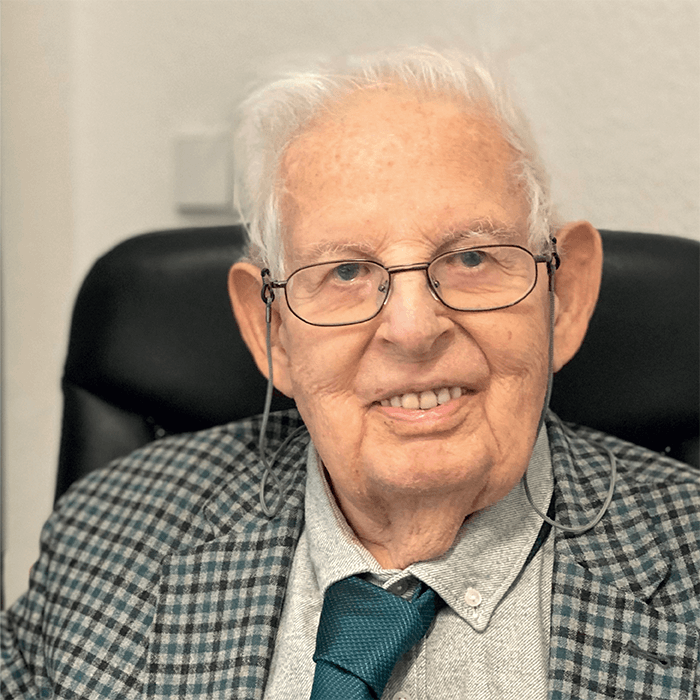
Herbert Knauer was always interested in further developing the instrumentation and columns. By 1987, KNAUER had dozens of stationary phases in its product line and manufactured separation columns with internal diameters ranging from 2 to 32 millimeters. Developments in this area also included column-filling equipment and capillary connection systems.
Early on, KNAUER also developed and produced instruments for competitors. The OEM business is an important pillar of the company. “The competition has always forced us to improve – we are very grateful for that,” Herbert Knauer once said at an anniversary celebration.
On September 10, 2021, German Chancellor Angela Merkel visited the company and congratulated Herbert Knauer on his 90th birthday. She described the company as a “jewel in the German SME sector.”
Although Herbert and Roswitha Knauer handed over the company’s management to their daughter Alexandra Knauer in 2000, Herbert’s passion for science and technology remains unbroken; he remains a familiar face at the KNAUER headquarters, where he still tinkers with components for HPLC systems.
To view extended versions of the HPLC’s Gallery of Honor, visit the HPLC website: https://bit.ly/41F33R6
Credit: Images sourced from Unsplash.com and Wikimedia Commons.
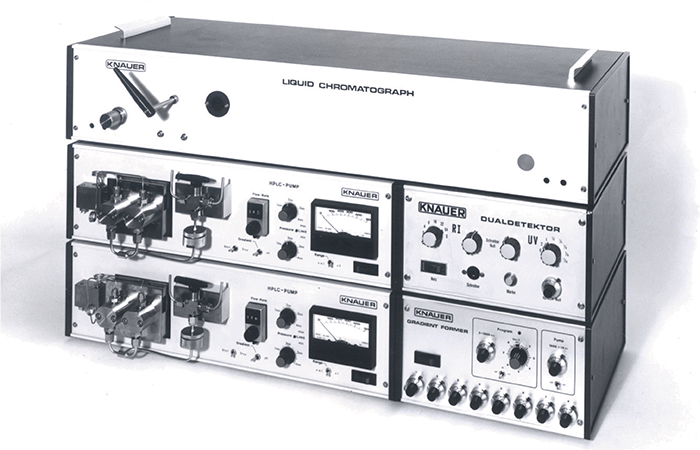
References
- E Bayer and HG Witsch, “Präparative gaschromatographie,” Anal Bioanal Chem, 170, 278-285 (1959).
- HPLC, “History of the HPLC congress in Germany” (2023). Available at: https://bit.ly/41JKqeA.
- H Engelhardt, H Löw, and W Götzinger, “Chromatographic characterization of silica-based reversed phases,” J Chromatogr A, 544, 371-379 (1991). DOI: 10.1016/S0021-9673(01)83996-0.




